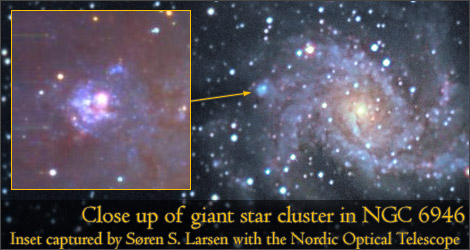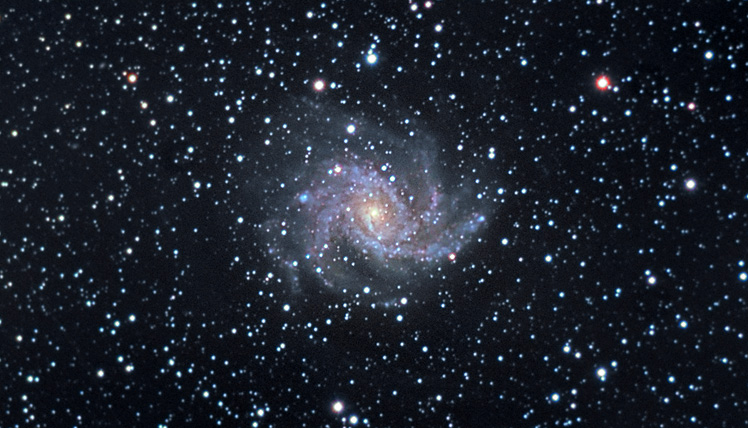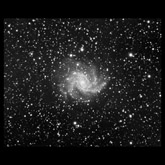Astrophotography cannot substitute for seeing objects through a telescope with your own eyes. I still remember the first time I saw the Pleiades through my rich-field Astroscan. Its brilliant stars shone like luminous jewels on a black velvet sky. Neither a printed photograph nor a computer monitor can yet reproduce the huge difference in contrast that the eye can perceive.
The reverse is also true, however. Even beginners can produce astrophotographs showing details beyond the range of human vision. A faint blob at the eyepiece turns into a colorful and complex spiral when captured by a camera. NGC 6946 is a perfect example.
Visually, this faint galaxy yields very little detail. If I had a choice between observing this galaxy and an average star cluster I'd take the star cluster every time. But photographically NGC 6946 is more interesting than more famous galaxies like M65 and M66.
Imaging Notes
Capturing NGC 6946 was easier than I expected, but it still requires a lot of exposure time. In particular, you need enough exposure time to bring out the faint outer edges of the disk. This will give the galaxy a more substantial and more natural look.
One of the most interesting features of this galaxy is a bright blue knot at the end of one its arms (left of center in the image above). This formation is a supercluster of young, blue stars. Though my image does not show much detail, you should be able to get better resolution with a long-focal length SCT.
The inset below was taken by astronomer Søren S. Larsen with the 2.56 meter Nordic Optical Telescope.


